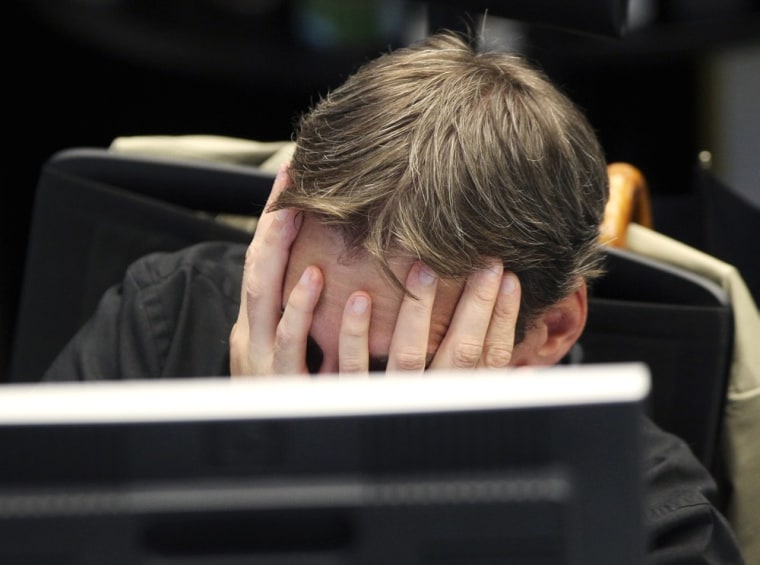We've seen the facepalm in the now all-too-familiar images of woeful stock brokers, hands on their faces as they receive news of the plummeting stock market. (There's even a Tumblr, The Brokers With Hands on Their Faces Blog, devoted to cataloging images of, well, brokers with hands on their faces.) We witnessed it when Secretary of State Hillary Rodham Clinton covered her mouth as she watched Navy Seals execute Osama bin Laden (although she blamed it on allergies) -- and we even see this gesture when beauty pageant contestants are crowned.
When humans are scared or shocked, we tend to put our hands over our mouths, hold our foreheads or place our hands over our cheeks. But why?
“It’s called the pacifier gesture,” says Janine Driver, president of the Body Language Institute in Washington, D.C. “It’s like a kid sucking his thumb. When our hands go up and touch our faces, it’s saying to ourselves ‘It’s OK, it’s safe.’ It’s like our mother giving us hug. It says we’ll get through this.”
Driver explains that when we witness a terrible accident, hear bad news or are in disbelief, putting our hands over our mouths is physically expressing that we can’t emotionally take anything else in.
But as common as it seems, body language researchers have found not everyone around the world covers their mouths when they are shocked, scared or surprised, and women tend do palm their faces more than men.
"The softer version of this is a man in the boardroom who puts his pointy finger over his lips and his hands on his chin,” says Driver, who became a body language expert while working as an investigator for the Bureau of Alcohol, Tobacco, Firearms and Explosives and is the author of the book "You Say More Than You Think."
Other gestures expressing fear or surprise include grabbing our wrists like Martha Stewart did each day as she went to trial or covering our top lip with an index finger and putting our hand over our chin.
But the body language gesture universally used around the world when we are scared is opening our mouths in an oval shape and raising our eyebrows, Driver says.
“This is in our DNA,” she says. “It doesn’t matter if you’re black, white or Hispanic, from Iraq, Zimbabwe or Chicago.”
